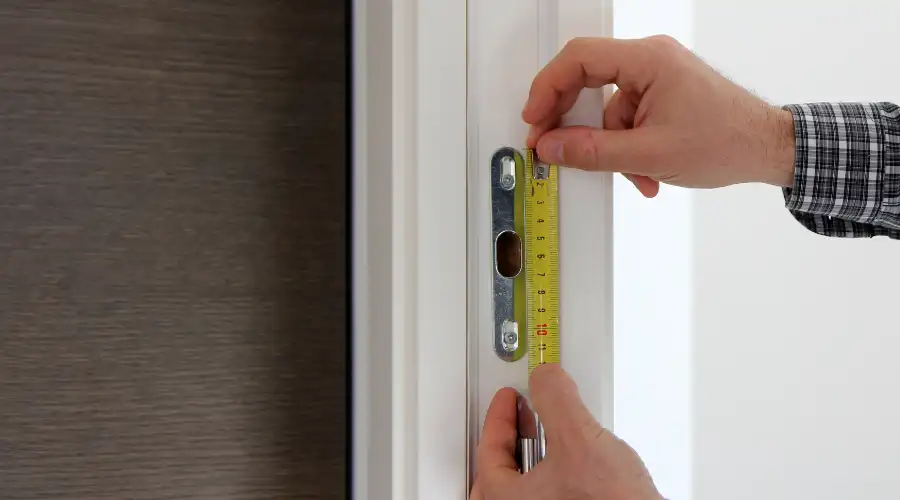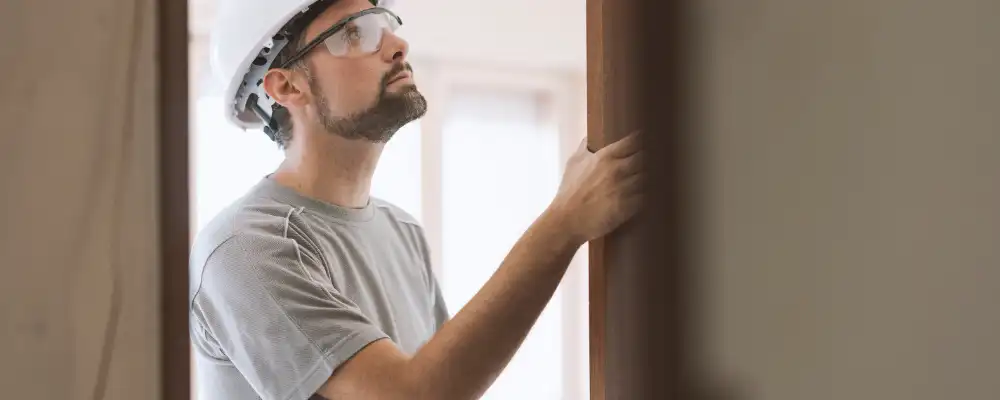Ever paid attention to that solid piece of wood your door latch latches into? Or thought to yourself, why does my door close perfectly sometimes, but sometimes allow a draft to come in? This is most likely because of a door jamb. If you have a construction or renovation at home coming up and you want your doors to align perfectly and function correctly, then it is crucial to understand what a door jamb is. Here at Brick & Bolt, we believe that solid knowledge aids in making better decisions in every construction project. So, let’s talk you through all of the things you need to know about door jambs in simple, straightforward terms.
What is a Door Jamb?
A door jamb is the vertical element in a door frame that the door is attached to with hinges and closes against. It is the vertical structure mounted in the wall’s “hole” which acts as the supporting surface for the hinges and for the door to latch or deadbolt. If a jamb is not installed correctly, a door literally won’t close properly, latch correctly or function properly.
Components of a Door Jamb

A typical door jamb is made of specific components, including:
- Head Jamb: It is the horizontal top of the frame and connects the two vertical side jambs to create a rectangular shaped unit that the door fits into.
- Hinge jamb: This is the side of the door jamb where the hinges are located. This part must be strong and absolutely plumb (vertical) in order for the door to swing properly without binding.
- Strike jamb: This is the side of the door jamb where the latch and locking mechanism is attached. This is where the strike plate is attached, which is the metal piece that the door latch or deadbolt latches into to hold the door closed.
- Stop molding: This is a thin strip of wood that runs down the inside edge of each side jamb, and across the head jamb. When the door closes, the edge of the door hits the stop molding, pulling it tight and preventing the door from swinging right through the door frame to the other side.
Functions of a Door Jamb
So, why does a door jamb matter so much? Here’s what it does:
- Supports the door – it carries the weight of the door and keeps it aligned.
- Choosing Secure locking systems – the jamb is where we fasten locks, latches, and deadbolts.
- Helps the door do its job – if the jamb is installed correctly, the door will open and close precisely.
- Seals gaps – weatherstrips are frequently attached to door jambs to block air & sound.
Types of Door Jamb
Door jambs come in several configurations to address specific frame constraints:
- Split Door Jambs: These are two-piece jambs that simply piece together around the wall framing. Split jambs are used mostly for installing doors in finished walls without removing any finish trim or casing.
- Exterior vs Interior Jambs: Exterior jambs are often solid wood in uPVC Doors or composite and are weather resistant. The pieces are generally wider than a standard interior jamb because exterior walls can be thicker, and most will have some integrated sill/threshold or separate sill/threshold with a weatherstrip groove to create a watertight seal.
- Solid Jambs: These jambs are made of one solid piece of material throughout the depth of the jamb for maximum strength and stability. They are used for heavier doors or heavy security applications.
Installing a Door Jamb
Installing a door jamb isn’t as simple as just screwing it in. Here’s a high-level look at the process:
- Measure the Rough Opening: This should be done precisely to the exact millimeter measurement.
- Level and Shim: To make sure that the jamb is plumb.
- Secure the Frame: Attach the jamb to the wall framing with screws or nails.
- Attach the Door: If the door is not pre-hung, it will be attached later with hinges.
- Add Trim and Seal: Finish the jamb with casing, caulk, and weather stripping.
If done incorrectly, even a high-quality door won’t close properly. That’s why professional installation—like what Brick & Bolt offers—is worth considering.
Maintenance Tips
A well-installed door jamb can last for decades, but a little care goes a long way:
- Look for moisture or rot in a wooden jamb.
- If your doors seem to be beginning to sag, you may want to tighten the screws (in the hinges).
- If your jamb is wooden, you should repaint or seal it once every couple of years.
- Besides not looking great, dirty hinges and latches may restrict your door from opening all the way or at all.
- Check your weather stripping on a regular basis to ensure your doors will insulate the home properly.
With periodic attention, your door jamb can stay strong and trouble-free.
Choosing the Right Door Jamb for Your Home
Here are a few things to consider when picking a door jamb:
- Location: Exterior vs. interior? Wet area vs. dry area?
- Material: Wood is commonly used to build jambs for interiors; composite materials or metal are commonly used for exteriors.
- Types of Doors: Heavy doors may require solid jambs or reinforced jambs.
- Style: Look at the finishes and trims to match your door and decor.
Still unsure? Brick & Bolt helps homeowners and builders across India make smart choices with expert guidance and customised construction services. Our team ensures every component—from frames to finishes—is perfect for your project.
Conclusion
A door jamb may seem like a small detail, but it actually has a big effect on how your door looks, operates, and holds up over time. Whether you’re building a new house, remodeling a room, or just curious about how things work—knowing about door jambs gives you the data you need to make informed decisions. If you plan to install or replace a door, enlist the help of professionals like Brick & Bolt to get the job done right, from the first nail you drive in to the last time the door swings closed. Connect with Brick & Bolt for professional construction help and find the best fit for your budget and vision.

